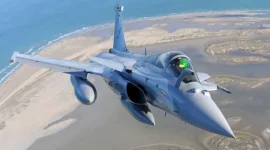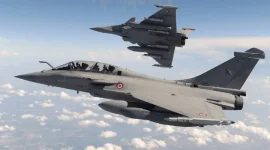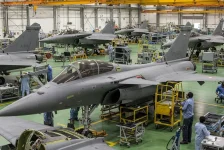- Views: 2K
- Replies: 9

Reports of the Chinese fifth-generation J-20 fighter jet achieving extraordinary success in a simulated combat exercise have spread rapidly, stirring heated debate.
According to these reports, initially circulated by Chinese state media like the Global Times, the J-20 purportedly eliminated a staggering 17 Dassault Rafale fighters of the Indian Air Force (IAF) without sustaining any losses.
While this claim garners attention, a critical look beyond the headlines reveals a more complex and uncertain picture.
The Source and Context of the Claim
It's crucial to note that the origin of this claim lies within Chinese state-controlled media. Such sources often play a role in amplifying narratives that promote China's military capabilities.It's also important to highlight that these reports lack specific details about the simulated exercise and offer no independent verification of the results.
Furthermore, the claim was initially publicized nearly three years ago, and the specific type of "enemy" aircraft involved remains unclear. Defense analysts speculate the simulation may have involved older fighter jets like the Shenyang J-11, a Chinese derivative of the Su-27, instead of the Rafale.
Exercise Results: Training vs. Real-World Combat
It's not unusual for advanced fighter jets to achieve one-sided kill ratios in training simulations, particularly against older or less sophisticated opponents.However, it's vital to distinguish between simulated environments and the unpredictable realities of air combat. Real-world conflicts involve factors such as pilot skill, tactics, electronic warfare systems, and the overall integration of air and ground forces, making the extrapolation of training outcomes unreliable.
Questioning Stealth Capabilities
The comparison between the J-20 and Rafale highlights a key debate: the J-20's true stealth effectiveness. While the Rafale isn't a fifth-generation fighter, Western analysts doubt the J-20's ability to fully evade advanced radar systems.Concerns center on the J-20's design elements and its radar cross-section, suggesting potential limitations in its stealth profile.
Counterpoints and Expert Analysis
Former IAF Chief Dhanoa offered a counterpoint to the perceived threat of the J-20, asserting that the radars on India's Su-30MKI fighters are capable of detecting the J-20 from a significant distance.This casts doubt on the J-20's ability to operate undetected in contested airspace. It's worth noting that such statements can also be strategic messaging as part of ongoing tensions between India and China.
Conclusion
The widely circulated claim of the J-20's dominance in simulated combat should be approached with caution. Without verifiable evidence and transparent reporting, there's a risk of such assertions serving as propaganda tools rather than accurate reflections of military capability.The complexities of modern air combat, questions surrounding the J-20's stealth attributes, and the inherent limitations of simulations all point to the need for a nuanced and skeptical understanding of such publicized achievements.



